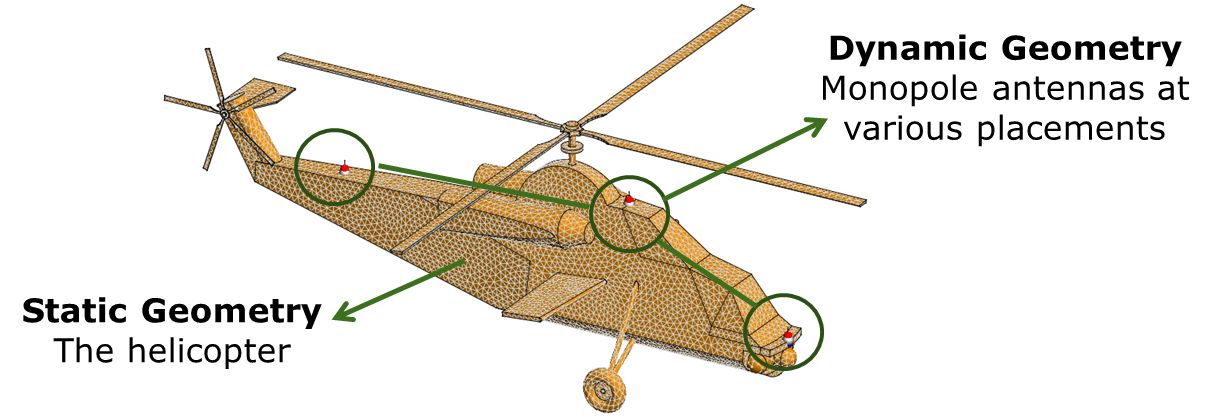Numerical Green's Function
The numerical Green's function can be used for problems containing static and dynamic parts, allowing re-use of the static part of the solution in subsequent simulations to improve overall performance.
The numerical Green's function, also sometimes referred to as macro basis functions, allows users to group a subsection of the model as being “static” and the rest of the model is then considered “dynamic”. During the solution phase, the static part is grouped together during the matrix fill phases and the matrix elements are stored to file. Any subsequent simulations use the static part instead of re-calculating it, allowing the simulation to complete faster. An example where this is useful would be when a rotor blade needs to be simulated in multiple positions or different positions of a source on a large platform. The structure supporting the rotor blade (helicopter, aeroplane, wind turbine tower) could be huge, much larger than the rotor blade itself, and reusing the calculations of the static part can be a tremendous saving.
All the segmentation rules still apply and the mesh elements and vertices need to align where the static and the dynamic parts touch. Care should be taken to ensure that the meshing is done that allows all the variations of interest in the dynamic part.

Figure 1. Example of a large platform (static) with source (dynamic) locations that need to be investigated.